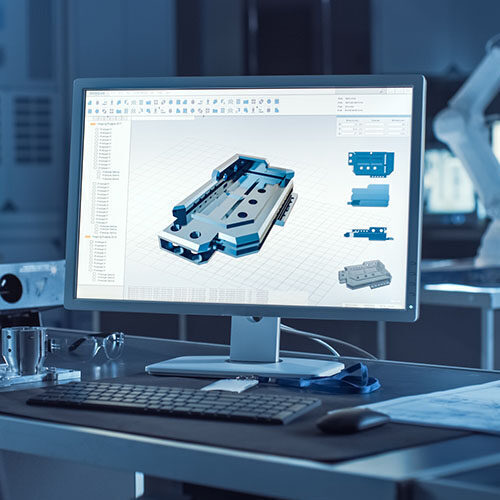
What exactly is green manufacturing, and how can custom manufacturers adopt eco-friendly processes to build a more sustainable future? Read on to learn the ins and outs of green manufacturing, plus explore five practical ways for custom manufacturers to implement green manufacturing practices into their business operations.
What is Green Manufacturing?
Green manufacturing, also known as sustainable manufacturing, focuses on producing goods in a way that minimizes environmental impacts while maximizing resource efficiency. This includes using eco-friendly processes and technologies to cut energy use, waste, and emissions, reducing the overall ecological footprint of the manufacturing process. From refining production methods to choosing eco-friendly materials, green manufacturing takes a systematic approach to sustainability, putting environmentally friendly practices first.
Adopting these practices into your shop doesn’t have to be complicated—there are simple steps manufacturers can take to make their operations more green. Plus, implementing green manufacturing techniques can lead to cost savings and improved efficiencies, helping you to boost your bottom line and overall productivity.
Five Ways to Implement Green Manufacturing
1. Adopt Lean Manufacturing Principles
Embrace lean manufacturing principles that improve operations and cut waste. Simplifying processes helps you to allocate and use your resources better and work more efficiently. By implementing practices such as just-in-time inventory management and looking for continuous improvements, you can significantly reduce waste and enhance your overall sustainability.
2. Invest in Energy-Efficient Technologies
Upgrade your manufacturing equipment and machinery to energy-efficient alternatives. Invest in modern, energy-efficient technologies like LED lighting, high-efficiency motors, and renewable energy sources like solar panels. By reducing energy consumption, you can not only lower operational costs but also minimize your carbon footprint and contribute to a greener future.
3. Optimize Supply Chain Management
Collaborate with your suppliers to source sustainable materials and components. Evaluate suppliers based on their environmental credentials, such as their adherence to eco-friendly manufacturing practices, use of recycled materials, and commitment to ethical sourcing. By optimizing your supply chain for sustainability, you can ensure that your products are environmentally responsible from design to delivery.
4. Implement Waste Reduction Strategies
Use waste reduction strategies to minimize how much waste you create and promote recycling and reuse. You can use lean manufacturing techniques to help identify opportunities for waste reduction and process optimization. Explore innovative solutions for waste management, such as closed-loop systems and material recovery programs, to both minimize your environmental impact and maximize your resource efficiency.
5. Educate and Empower Employees
Foster a culture of sustainability within your organization by educating and empowering employees. Provide training and awareness programs on green manufacturing practices and the importance of sustainability. Encourage your employees to engage and participate in sustainability initiatives, such as energy conservation campaigns and waste reduction projects. By cultivating a workforce committed to sustainability, you can drive positive change and create a greener future.
How ERPs Can Help Manufacturers Go Green
In addition to implementing sustainable practices on the production floor, custom manufacturers can also use their ERP systems to further enhance their green initiatives.
Enterprise Resource Planning systems provide comprehensive visibility and control over various aspects of manufacturing operations, helping you to optimize resource utilization, minimize waste, and reduce environmental impact. By centralizing data and streamlining processes, ERPs facilitate efficient inventory management, production planning, and supply chain coordination, allowing custom manufacturers to make informed decisions that prioritize sustainability.
Advanced analytics capabilities can also help you to analyze things like energy consumption, emissions, and other environmental metrics, identifying areas for improvement and implementing targeted initiatives to reduce your ecological footprint. By integrating green manufacturing principles into your ERP system, you can track and manage your sustainability efforts to create a greener, more sustainable future.
Conclusion
Green manufacturing is the key to building a more sustainable future for the manufacturing industry. By embracing environmentally friendly practices and implementing green manufacturing initiatives, custom manufacturers can minimize their environmental impact, enhance operational efficiency—and contribute to a healthier planet.
From adopting lean manufacturing principles to using ERP systems to track eco-friendly efforts, there are many easy ways for custom manufacturers to integrate sustainability into their business operations. By prioritizing sustainability and embracing green manufacturing principles, custom manufacturers can not only reduce their ecological footprint but also pave the way for a greener future.
Looking for more ways to go green? Click through and read 5 Ways Manufacturers Can Become More Sustainable.
Get your eBook Scared to implement a new ERP?
"*" indicates required fields



